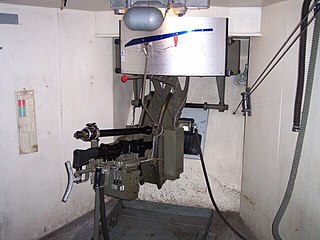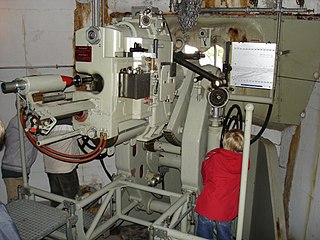 W
WFort Ebersberg, also known as Fort Rüdlingen, was built between 1938 and 1940 in the Swiss Canton of Zurich to guard the Rhine against a German invasion at the opening of World War II. It is the only such position in the Zurich canton, located near the town of Berg am Irchel. The fort was part of the Swiss Border Line defenses, Swiss military designation A5438.
 W
WThe Fort de Champillon is a twentieth-century Swiss fortification located in the heights overlooking the Rhône valley from the north between Montreux and Monthey. Completed in 1944, the fort secures the road and rail lines running east from Lausanne to the mountainous interior of Switzerland. The position is an advanced work protecting the approaches to Fortress Saint-Maurice, part of the Swiss National Redoubt. It is entered from the plateau just downhill from Corbeyrier, a village on the heights at the foot of the Tour d'Aï.
 W
WFort Heldsberg was built 1938–1940 near St. Margrethen in Switzerland, overlooking the Rhine, which forms the Swiss-Austrian border at that location, just south of Lake Constance. The fort was part of the Swiss Border Line defenses, built between 1938 and 1941.
 W
WThe Fort de Pré-Giroud, also known as the Fort de Vallorbe, is a 20th-century Swiss fortification located in the Jura Mountains near the Swiss border with France. The fort defended the Col de Jougne at Vallorbe, one of the few points in the Jura that could be easily traversable by an invading force. It was a component of the Swiss Border Line of defenses. Built between 1937 and 1939, the fort covers the Swiss end on the Mont d'Or railroad tunnel and the Joux valley. It is armed with three artillery blocks for 75mm guns and two machine gun blocks. All are camouflaged, the artillery blocks as rock formations, and the machine gun blocks as houses. Deactivated as a military post in the 1980s, it is operated as a museum.
 W
WFort Reuenthal is a 20th-century Swiss fortification located in the Aargau canton near the Swiss border with Germany. Built between 1937 and 1939, the fort overlooks the Rhine where it bends around the town of Full-Reuenthal, and was intended to prevent a crossing of the Rhine at the hydroelectric plant at Dogern. It was a component of the Swiss Border Line of defenses. It is armed with two artillery blocks for 75mm guns and two machine gun blocks. The fort uses camouflage, with house-like superstructures over some positions. Deactivated as a military post in 1988, it is operated as a museum.
 W
WThe Fort de Cindey is a component of Fortress Saint-Maurice, which is in turn one of the three principal fortified regions of the National Redoubt of Switzerland. The Fort de Cindey was built in two steps: the first, between 1941 and 1946 and the second step, between 1948 and 1954. It was taken out of service in 1995. This fort was built in the Scex cliff face immediately to the west of Saint-Maurice to complement the existing Fort du Scex, built earlier in the same cliff. With the Fort du Scex, it comprises a fortress complex encased in rock high above the strategic Saint-Maurice valley. The fort was deactivated in 1995. It is now open for public tours during the summer months.
 W
WThe Fort du Scex is a component of Fortress Saint-Maurice, which is in turn one of the three principal fortified regions of the National Redoubt of Switzerland. The Fort du Scex was built in the Scex cliff face immediately to the west of Saint-Maurice beginning in 1911. With the later Fort de Cindey, it comprises a fortress complex encased in rock high above the strategic Saint-Maurice valley. The fort lost its combat function in 1984 and was entirely deactivated in 1995. It is now open for public tours during the summer months.